We had the pleasure of trying out Forbidden Psalm, the Mörk Borg compatible agnostic RPG of which I write this review; thanks to Exalted Funeral for sending us a physical copy!
The manual was written by Kevin Rahman and published under the “Mörk Borg Third Party License“. Based entirely on the use of miniatures, this compact manual will only require a 60x60cm surface, miniatures, a dice set and a measuring tape to play. It’s also specified that, being an “agnostic” system, it is not necessary to have the Mörk Borg basic manual. In fact, the work contains all the rules necessary to play directly, plus any conversion tables in case you want to use other compatible material.
Forbidden Psalm has its very own website, from which you can access all the purchase links for the basic manual and expansions. The paper format is available on Exalted Funeral at a cost of $25 for the softcover version, and $40 for the hardcover version.
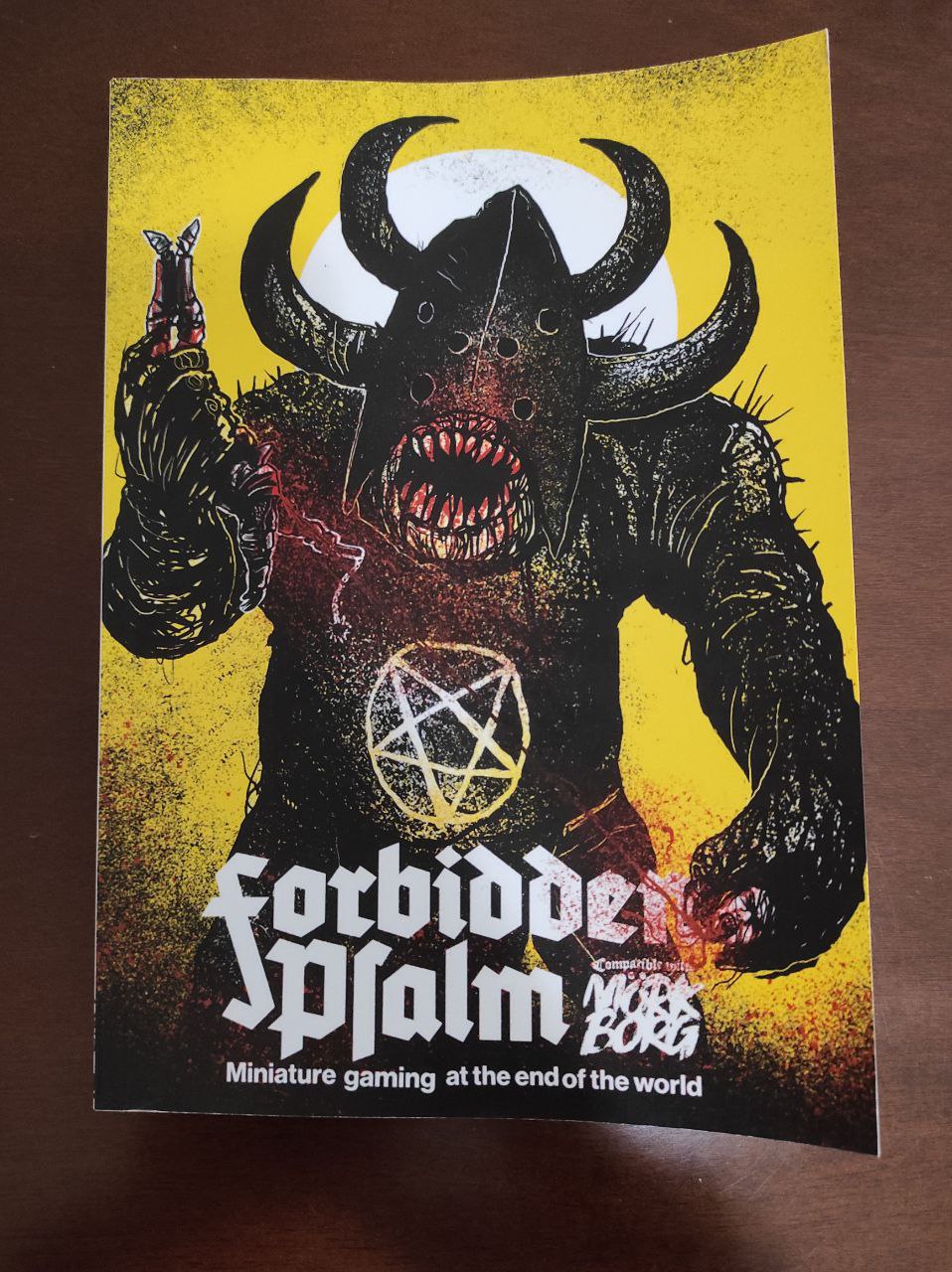
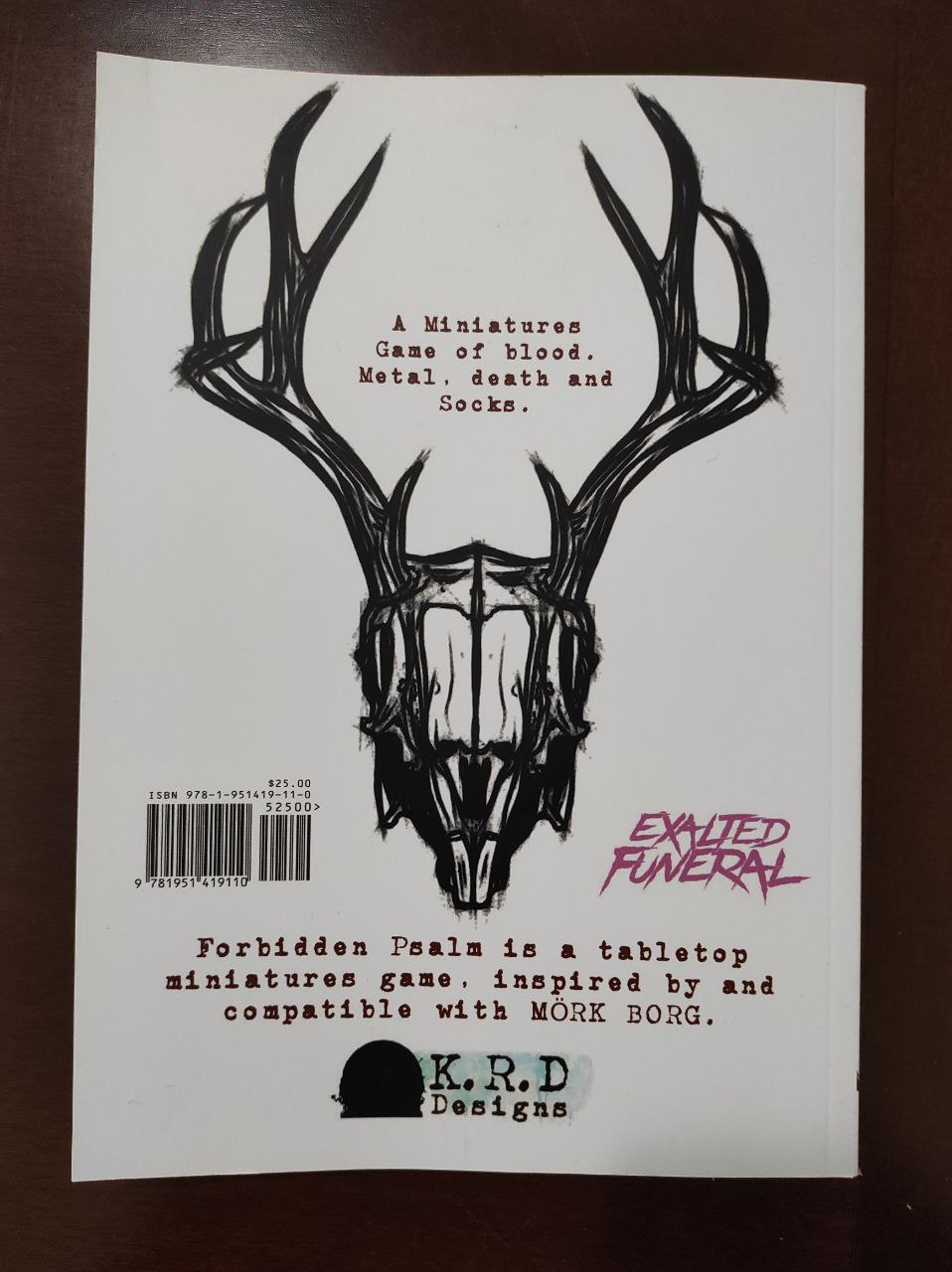
Introduction to the Miniatures
To play Forbidden Psalm we will need at least 5 miniatures, corresponding to five player characters. We will assign a name, characteristics, a flaw, a talent and equipment to each of them. Furthermore, we will be able to choose a member of this gang and name them “Spellcaster”. Gold for equipping and recruiting party members is shared, and for good reason: Forbidden Psalm can also be played in twos, or even alone.
The Spellcaster will have access to two spells, while having an increased recruitment cost. Once the characters have been generated, the game board is set up. In my case I generated Arthur the Realist: talentless and unable to use any Omen. Below you will find a magnificent picture of him, printed and colored by phantasy.png.
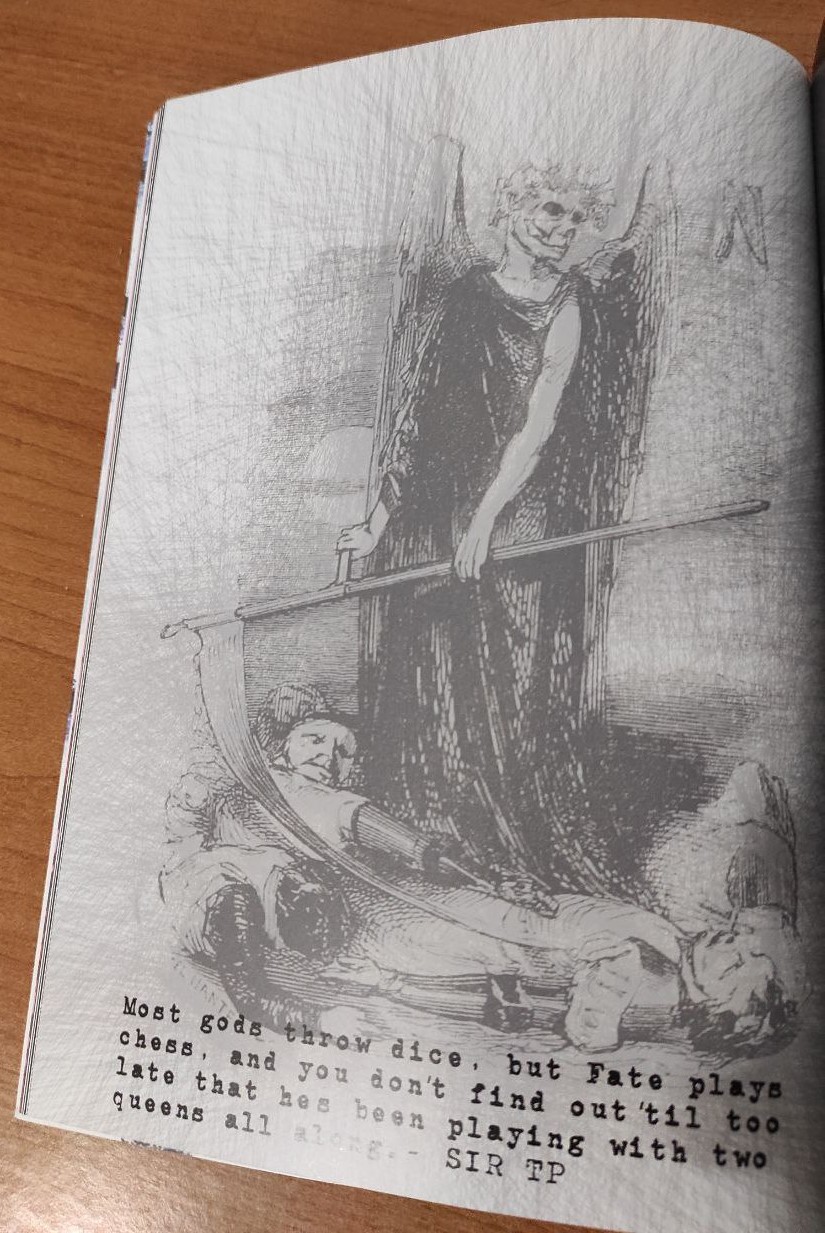


All measurements are in Inches, but the conversion is very simple as we will often be using squares. Once the party is created, it will be up to the Game Master to prepare the miniatures of the enemies.
The creation of the party is very clear in the explanations, as well as undoubtedly quick and facilitated by the numerous tables in the manual. All the content of this chapter is completely new, except for some Omens that follow those of the Mörk Borg core manual. I found the whole process fun to do with friends, and it didn’t take more than half an hour with the miniatures ready.
Review of the Mechanics of Forbidden Psalm
Now that we have our minis, we just have to choose a scenario (among those ready in the manual, or inventing one), arrange the grid, arrange the creatures and decide who starts.
The initiative (like the other tests) is rolled with a simple d20. For almost all other rolls, the base difficulty is 12, just like in Mörk Borg.
The miniatures must be “activated”, and can move and perform an action. When they perform an action, the turn ends. Damage is decided by the equipped weapon, and movement depends on the character’s Agility. Before starting the fight, each party member can place an obstacle on the map. Then 1d6 is rolled, and if the sum of the result and the obstacles is less than 9, more pieces can be added.

The monster management rules have great impact: they have a tag, and they will tend to attack anything that differs from it. A skeleton, for example, would attack a goblin if it were closer than a party member. Creatures must also be able to see a target in order to attack it.
The combat rules are very simple: melee can only be done by adjacent creatures. Ranged attacks, on the other hand, have an explicit range in inches (or squares). As you can see, all the game mechanics are immediate and suitable for playing even without particular preparation.
Resources for the Game Master and Bonuses
Much of the manual is devoted to providing adventures and maps to the Game Master. We find 10 ready adventures, including schemes on how to arrange the creatures. Each of them is accompanied by a page with a description of the events and any obtainable treasure. All stories are connected to the same NPC: Vripix the Mad Wizard. He seeks out the Forbidden Psalm, a scripture said to repel darkness.
The manual is littered with useful tables, such as that of treasures. The pre-generated monsters are all very different from each other, accompanied by illustrations in full Mörk Borg style. One of them is by Johan Nohr (illustrator of Mörk Borg): the Collector of Corpses, featured on the cover. At the end of the manual there are “2D miniatures”, illustrations of the monsters framed and ready to be photocopied… or cut out, if you are an heartless monster.
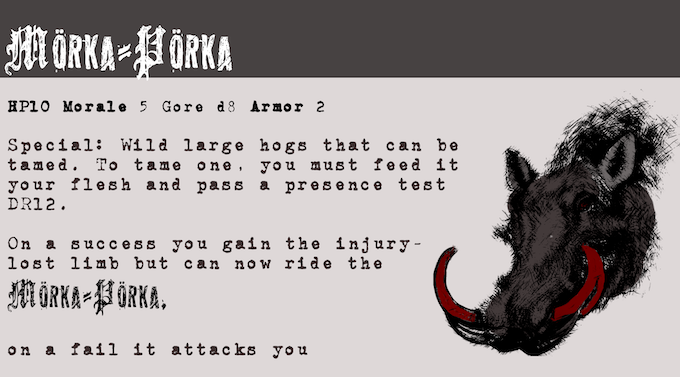
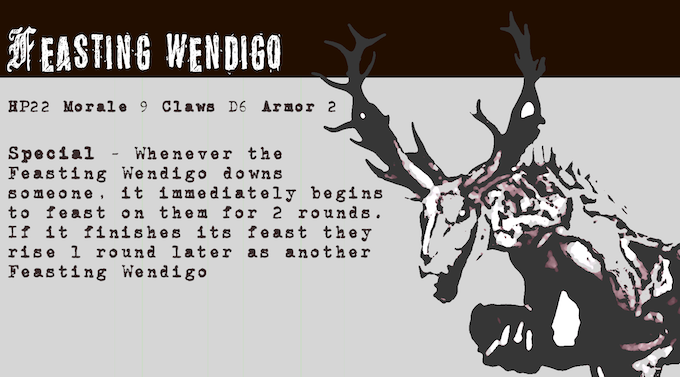

What particularly entertained me was the bonus adventure, a real chariot race. The “longest table you can get your hands on” is required to play. I have to say that all the adventures included have original and interesting characteristics. For example, Sock Eater will let you play “Catch a Mole” with petty goblins! It is almost a sort of mini-game with special rules: we will have to collect and match as many socks as possible. Obviously there will be a time limit, so you need to be efficient!
Conclusion of the Review of Forbidden Psalm
Forbidden Psalm is a solid product, offering something niche and doing it well. The mix of skirmish and role-playing works great, also thanks to the author’s attention to detail.
I strongly recommend the purchase, but only if you intend to play with miniatures. The manual makes no sense at all if you intend to use the theater of the mind.

